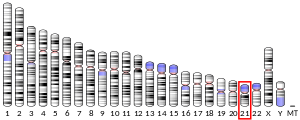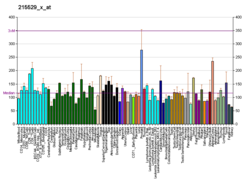| DIP2A | |||||||||||||||||||||||||||||||||||||||||||||||||||
|---|---|---|---|---|---|---|---|---|---|---|---|---|---|---|---|---|---|---|---|---|---|---|---|---|---|---|---|---|---|---|---|---|---|---|---|---|---|---|---|---|---|---|---|---|---|---|---|---|---|---|---|
| Identifiers | |||||||||||||||||||||||||||||||||||||||||||||||||||
| Aliases | DIP2A, C21orf106, DIP2, disco interacting protein 2 homolog A | ||||||||||||||||||||||||||||||||||||||||||||||||||
| External IDs | OMIM: 607711; MGI: 2385920; HomoloGene: 41012; GeneCards: DIP2A; OMA:DIP2A - orthologs | ||||||||||||||||||||||||||||||||||||||||||||||||||
| |||||||||||||||||||||||||||||||||||||||||||||||||||
| |||||||||||||||||||||||||||||||||||||||||||||||||||
| |||||||||||||||||||||||||||||||||||||||||||||||||||
| |||||||||||||||||||||||||||||||||||||||||||||||||||
| |||||||||||||||||||||||||||||||||||||||||||||||||||
| Wikidata | |||||||||||||||||||||||||||||||||||||||||||||||||||
| |||||||||||||||||||||||||||||||||||||||||||||||||||
Disco-interacting protein 2 homolog A is a protein that in humans is encoded by the DIP2A gene.
See also
References
- ^ GRCh38: Ensembl release 89: ENSG00000160305 – Ensembl, May 2017
- ^ GRCm38: Ensembl release 89: ENSMUSG00000020231 – Ensembl, May 2017
- "Human PubMed Reference:". National Center for Biotechnology Information, U.S. National Library of Medicine.
- "Mouse PubMed Reference:". National Center for Biotechnology Information, U.S. National Library of Medicine.
- "Entrez Gene: DIP2A DIP2 disco-interacting protein 2 homolog A (Drosophila)".
Further reading
- Nagase T, Seki N, Ishikawa K, et al. (1996). "Prediction of the coding sequences of unidentified human genes. V. The coding sequences of 40 new genes (KIAA0161-KIAA0200) deduced by analysis of cDNA clones from human cell line KG-1". DNA Res. 3 (1): 17–24. doi:10.1093/dnares/3.1.17. PMID 8724849.
- Yu G, Zerucha T, Ekker M, Rubenstein JL (2002). "Evidence that GRIP, a PDZ-domain protein which is expressed in the embryonic forebrain, co-activates transcription with DLX homeodomain proteins". Brain Res. Dev. Brain Res. 130 (2): 217–30. doi:10.1016/S0165-3806(01)00239-5. PMID 11675124.
- Wang Z, Tseng CP, Pong RC, et al. (2002). "The mechanism of growth-inhibitory effect of DOC-2/DAB2 in prostate cancer. Characterization of a novel GTPase-activating protein associated with N-terminal domain of DOC-2/DAB2". J. Biol. Chem. 277 (15): 12622–31. doi:10.1074/jbc.M110568200. PMID 11812785.
- Gardiner K, Slavov D, Bechtel L, Davisson M (2002). "Annotation of human chromosome 21 for relevance to Down syndrome: gene structure and expression analysis". Genomics. 79 (6): 833–43. doi:10.1006/geno.2002.6782. PMID 12036298.
- Mukhopadhyay M, Pelka P, DeSousa D, et al. (2002). "Cloning, genomic organization and expression pattern of a novel Drosophila gene, the disco-interacting protein 2 (dip2), and its murine homolog". Gene. 293 (1–2): 59–65. doi:10.1016/S0378-1119(02)00694-7. PMID 12137943.
- Strausberg RL, Feingold EA, Grouse LH, et al. (2003). "Generation and initial analysis of more than 15,000 full-length human and mouse cDNA sequences". Proc. Natl. Acad. Sci. U.S.A. 99 (26): 16899–903. Bibcode:2002PNAS...9916899M. doi:10.1073/pnas.242603899. PMC 139241. PMID 12477932.
- Casadei R, Strippoli P, D'Addabbo P, et al. (2004). "mRNA 5' region sequence incompleteness: a potential source of systematic errors in translation initiation codon assignment in human mRNAs". Gene. 321: 185–93. doi:10.1016/S0378-1119(03)00835-7. hdl:11586/196824. PMID 14637006.
- Ota T, Suzuki Y, Nishikawa T, et al. (2004). "Complete sequencing and characterization of 21,243 full-length human cDNAs". Nat. Genet. 36 (1): 40–5. doi:10.1038/ng1285. PMID 14702039.
- Gerhard DS, Wagner L, Feingold EA, et al. (2004). "The status, quality, and expansion of the NIH full-length cDNA project: the Mammalian Gene Collection (MGC)". Genome Res. 14 (10B): 2121–7. doi:10.1101/gr.2596504. PMC 528928. PMID 15489334.
- Rual JF, Venkatesan K, Hao T, et al. (2005). "Towards a proteome-scale map of the human protein-protein interaction network". Nature. 437 (7062): 1173–8. Bibcode:2005Natur.437.1173R. doi:10.1038/nature04209. PMID 16189514. S2CID 4427026.
- Winnepenninckx B, Debacker K, Ramsay J, et al. (2007). "CGG-repeat expansion in the DIP2B gene is associated with the fragile site FRA12A on chromosome 12q13.1". Am. J. Hum. Genet. 80 (2): 221–31. doi:10.1086/510800. PMC 1785358. PMID 17236128.
This article on a gene on human chromosome 21 is a stub. You can help Misplaced Pages by expanding it. |




